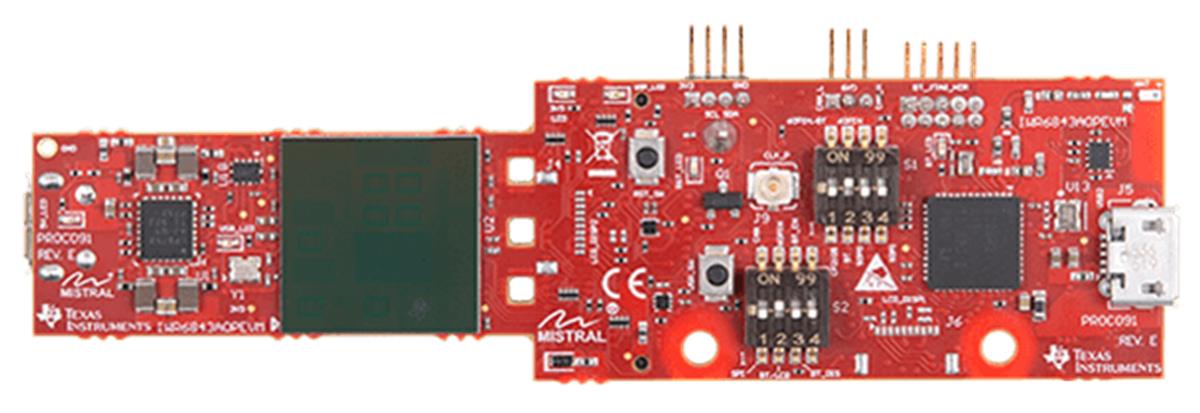TIDUEY3 November 2020
3.1.1 Hardware
The in-cabin sensing application runs on the AWR6843AOP EVM and connects to a visualization tool running on a PC via USB. For details regarding usage of this board, see the AWR6843 Evaluation Module (AWR6843ISKM) Single-Chip mmWave Sensing Solution.
The AWR6843 core design includes:
- AWR6843 device: A single-chip, 60-GHz radar device with an integrated DSP
- Power management network using a low-dropout linear regulator (LDO) and power management integrated circuit (PMIC) DC/DC supply (TPS7A88, TPS7A8101-Q1, and LP87524B-Q1)
 Figure 3-1 AWR6843 Intelligent mmWave
Sensor Antenna-On-Package (AoP) Evaluation Module Board Image
Figure 3-1 AWR6843 Intelligent mmWave
Sensor Antenna-On-Package (AoP) Evaluation Module Board Image